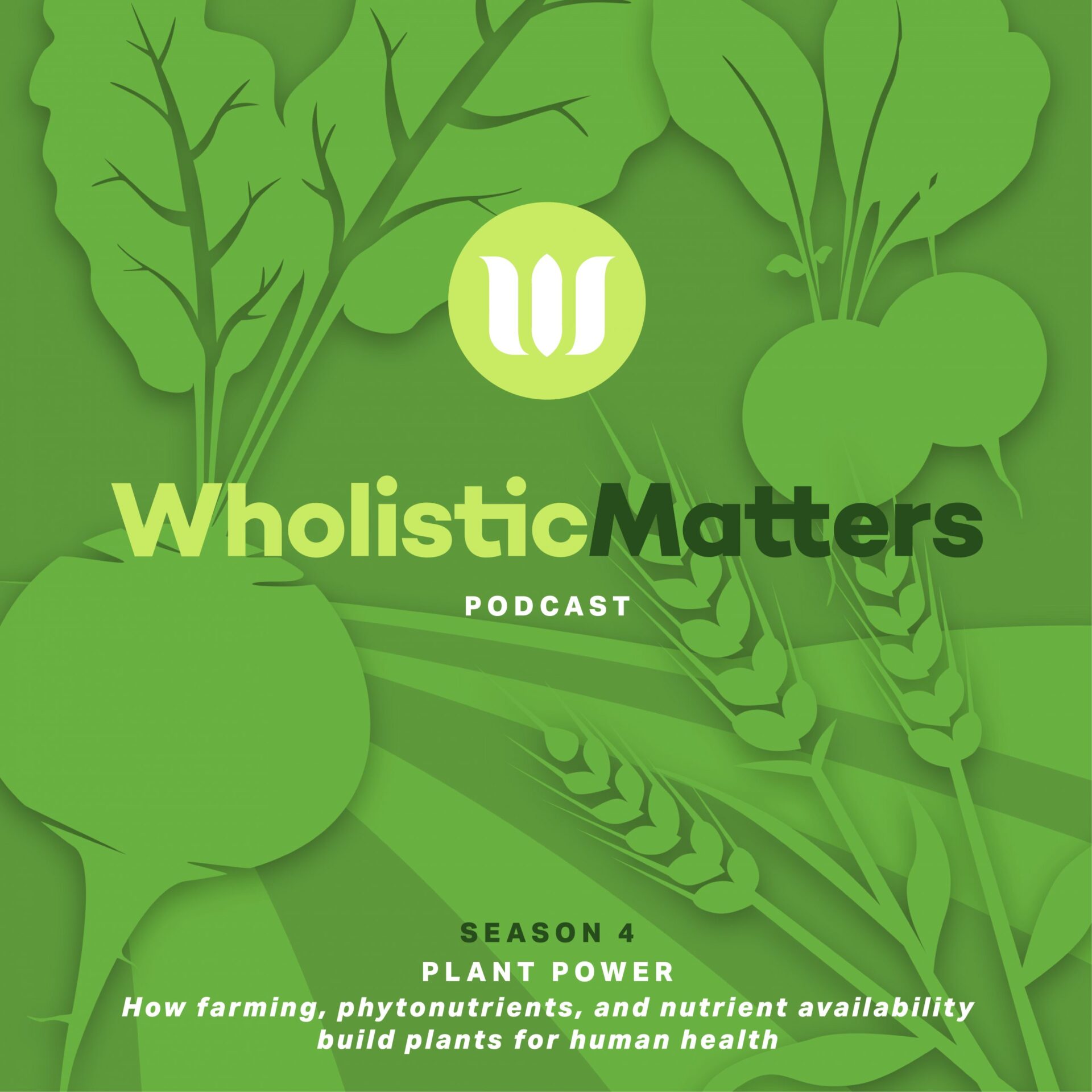A Brief History of Plants and How to Improve Plant Genetics (Without GMOs)
About this Episode
In the second episode of Plant Power, the fourth season of the WholisticMatters Podcast Series, our topic is plant genetics and genetic modification. Guests on this episode are scientists Brandon Metzger, PhD, and Eric Jackson, PhD. Listen all the way to end for clinical insights from practitioner Dave Hogsed, DOM, AP.
A Natural Approach to Plant Genetics
Dr. Jackson describes an alternative approach that harnesses the natural process of natural selection, which is characterized by pressure placed on plants to adapt their function based on changing environmental circumstances. In this case, nature – rather than human intervention – is the primary force selecting which plants will survive based on how they evolve and adapt to changes in the environment over time.
Crop Yield vs. Nutrient Density
Our guests explain how humans have acted as plant breeders, taking advantage of natural selection, for thousands of years. However, while generations of human selection may have led to bigger crops with higher yield, the selection has not necessarily led to the growth of the most nutrient-dense crops. While nutrient density may not have been on the minds of plant breeders in the past, it is a quality that breeders of modern day are now interested in preserving and improving.
Dr. Jackson explains that newly founded interest in nutrient density prompts exciting new opportunities and advances in plant genetics with important nutritional endpoints. While reflecting on a modern goal of quality of quantity, our guests describe a process that’s both time-effective and the way nature intended, a process of optimizing a plant’s genetic potential for its nutritional content:
“What if we went back now, and went back to the diversity of a thousand years ago, that farmers started with, but use now a more knowledge-base of how this genetic information works, and then use that to accelerate and optimize how we [use natural selection] with more precision and technology – which is NOT a genetic modification.”








